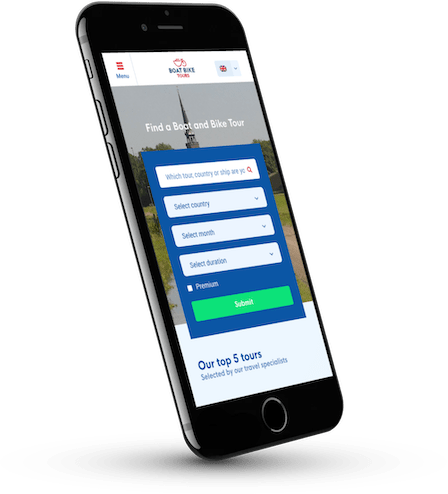Our top 5 tours
Selected by our travel specialists
-
from €2799 p.p.Europe’s heartland: Amsterdam to Paris Deluxe biking & boating experience
-
from €1279 p.p.Green Heart of Holland Guided History and Holland's Green Heart
-
from €1599 p.p.Islandhopping Netherlands Premium A UNESCO World Heritage Experience
-
from €2199 p.p.Sail & Bike Tuscany Cycling through Tuscany and Islands
-
from €1799 p.p.Kvarner Bay and islands | PLUS Discover the charm of the Adriatic Sea
Popular countries
Based on recent bookings
-
 Netherlands Tours: 24
Netherlands Tours: 24 -
 Croatia Tours: 10
Croatia Tours: 10 -
 Belgium Tours: 6
Belgium Tours: 6 -
 France Tours: 8
France Tours: 8 -
 Germany Tours: 15
Germany Tours: 15 -
 Greece Tours: 7
Greece Tours: 7 -
 Danube Countries Tours: 6
Danube Countries Tours: 6

